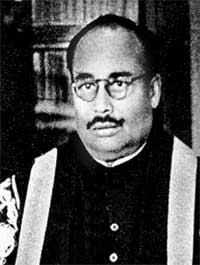History of the Jats:Dr Kanungo/Foreword
| Digitized & Wikified by: Laxman Burdak IFS (R) |
History of the Jats
By K. R. Qanungo. Edited by Vir Singh. Delhi, Originals, 2003, ISBN 81-7536-299-5.
Foreword

The Jats are one of the most important races among the Indian population today, as during the Muslim period, and their traditions go back to dim antiquity. A critical study of the past history of such a race on the basis of all the available material cannot fail to be a subject of deep interest and instruction to all Indians. Such a study is presented in this book.
It represents the loving and devoted labour of Professor Kalika R. Qanungo for years together. He denied himself holidays and worked at this history in my library by sacrificing his vacations. All known sources, printed and manuscript, Persian, Marathi, French and English, (besides Sanskrit for the mythical age), have been utilised here, and this History of the Jats represents a synthesis never attempted before, and leaving (so far as I can see) nothing for future workers unless new materials are discovered hereafter. Professor Qanungo has already proved his sound critical powers and true historical spirit in his first book, Sher Shah, which at once leaped into the position of the standard work on the subject. In his History of the Jats, he has not been content to be a closet student of written records. He has lived and worked among the Jat boys of his former college at Delhi, he has won their love and confidence (as I was pleased to learn when I spent a day there three years ago), and has visited their historic places and tribal gatherings and talked with old Jats whose memories are richly stored with the past. The information he has thus gathered by a personal quest spread over a wide field is concentrated in this book and gives it a unique value.
As will be expected from the high quality of his earlier work, he has here sifted the evidence impartially and reviewed events and characters from the broad point of view of India as a whole, instead of narrowing his vision to a single tribe. This wider outlook, this philosophical detachment from the particular dynasty or community dealt with, is specially necessary in any history of India in the 18th century that deserves to live as a true history. For, the Jats were only one out of the many threads that made up the tangled web of North Indian history during the decline of the Mughal empire. The Jats, Ruhelas, Sikhs, Marathas, Rajputs, Oudh Nawabs, English Company, French adventurers, besides the Delhi Emperors and their semi-independent nobles - all entered into the criss-cross of Indian politics during that one century which saw the rise, maturity and downfall of the Jats as the makers of Indian history; and, therefore, Professor Qanungo has done wisely in studying the contemporary history and interplay of all of these Powers, before he felt himself competent to write this account of the Jats alone - though very little of his labour appears on the surface to the reader of the following pages.
Here is a first-rate contribution to the critical study of the Fall of the Mughal Empire. The Jat people may be congratulated on having secured such a historian. Possibly the ignorant among them may grumble that their tribal prejudices have not been flattered; but truth is great and will prevail, and Qanungo has sought truth with singleness of aim and backed by all the resources available to scholarship in his way.
May , 1925
Note:Images are not part of the original book but have been added in online edition from Jatland Wiki gallery to make content interesting and for better understanding of the text.

